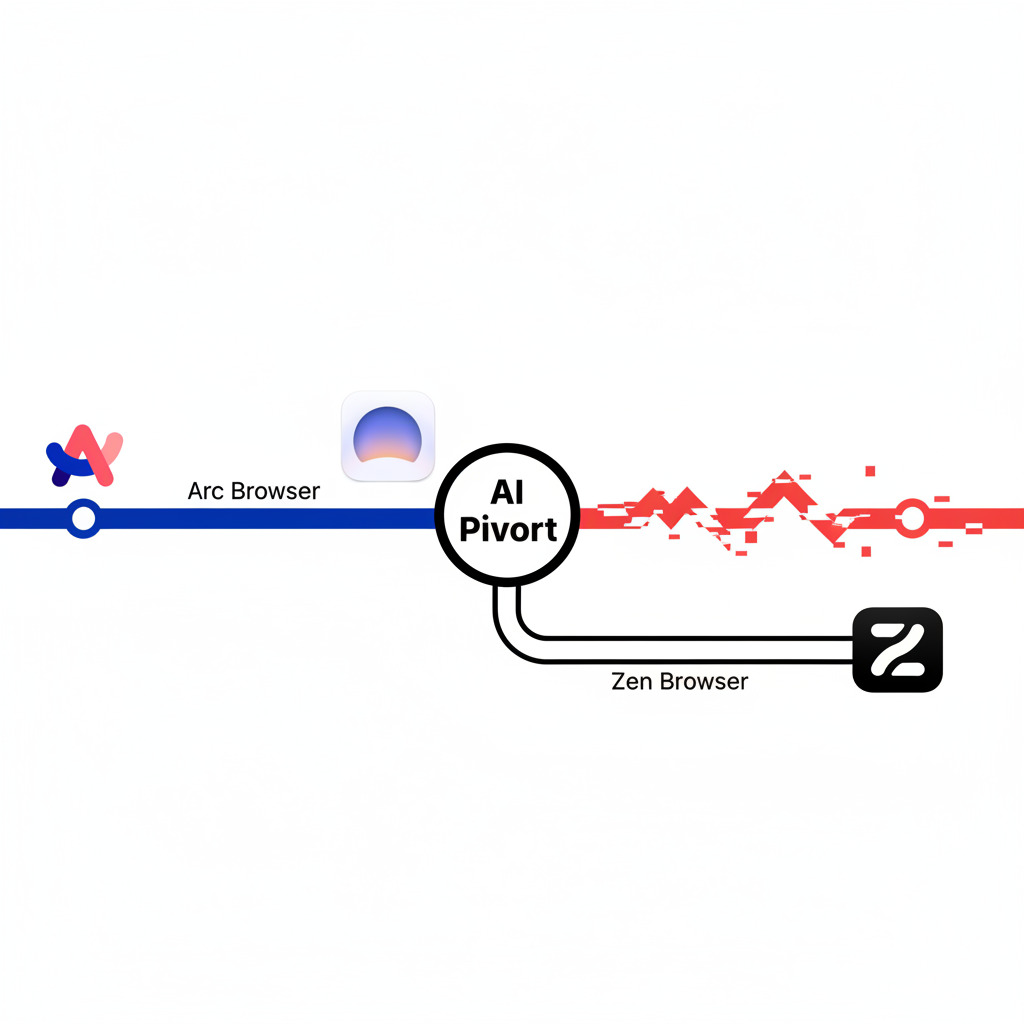The Early Adopter’s Paradox: Why I Left the Browser I Loved
I was an evangelist for the Arc browser until its pivot to an AI model led to critical instability. This is my story of why I churned and the hard lesson for builders.

My MacBook M1 Air felt unusually warm, its amazing battery life shockingly cut in half within just two hours. The culprit, according to my activity monitor, was the one application I had evangelized to my friends: the Arc browser.
It was a painful discovery because my journey with Arc began as a solution to a daily, deep-seated frustration. The real issue wasn't just email, but using web apps like Zoho Books that were tied to different Google accounts for my various businesses.
To switch between my business accounts, I had to completely sign out of one Google account and sign back in with another, a clumsy and time-consuming process. Arc’s "Spaces" feature solved this beautifully by creating completely isolated sessions within a single window.
This transformed my most frustrating workflow into a seamless, single-click action, and for that, it felt like magic. The vertical tabs were a refreshing change, and its superior memory management was a welcome relief from Chrome's notorious drain.
This combination of features was so effective that I recommended it to several friends who faced the same workflow issues. But my experience was unfolding against a backdrop of a major strategic shift within its parent company.
The Browser Company announced it was stopping new feature development for Arc, pivoting to a new, AI-first browser named Dia. CEO Josh Miller explained the move by stating that Arc was "simply too different... for too little reward," and that the future was AI interfaces, not traditional browsers.
This new direction meant the original Arc browser was no longer the priority, and this neglect began to show. For me, the catastrophic battery consumption was the final, unavoidable sign that the product I championed was being left behind.
I initially switched back to Safari, which had conveniently launched its own "Profiles" feature, proving that innovative ideas are quickly copied. Soon after, I discovered Zen Browser, an open-source alternative that offered the stability and core features I needed without the performance cost.
This entire experience highlights a difficult truth: while I genuinely loved using Arc, I am not sure I would have ever paid for it. The problems it solved were real, but not significant enough to turn me into a paying customer when free alternatives were bound to appear.
It leaves me asking every builder I know: how do you build for your earliest fans without getting trapped by their reluctance to pay?